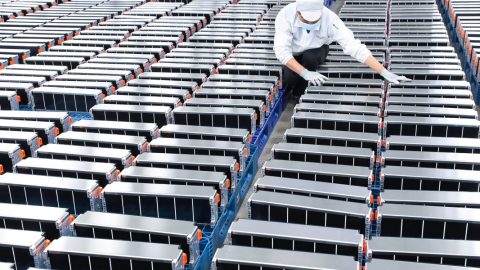But this pace of innovation is not guaranteed, and the next frontier of technological advances—from the future of AI to new computing paradigms—will only happen if we think differently.

Atomic challenges
The modern microchip stretches both the limits of physics and credulity. Such is the atomic precision, that a few atoms can decide the function of an entire chip. This marvel of engineering is the result of over 50 years of exponential scaling creating faster, smaller transistors.
But we are reaching the physical limits of how small we can go, costs are increasing exponentially with complexity, and efficient power consumption is becoming increasingly difficult. In parallel, AI is demanding ever-more computing power. Data from Epoch AI indicates the amount of computing needed to develop AI is quickly outstripping Moore’s Law, doubling every six months in the “deep learning era” since 2010.
These interlinked trends present challenges not just for the industry, but society as a whole. Without new semiconductor innovation, today’s AI models and research will be starved of computational resources and struggle to scale and evolve. Key sectors like AI, autonomous vehicles, and advanced robotics will hit bottlenecks, and energy use from high-performance computing and AI will continue to soar.
Materials intelligence
At this inflection point, a complex, global ecosystem—from foundries and designers to highly specialized equipment manufacturers and materials solutions providers like Merck—is working together more closely than ever before to find the answers. All have a role to play, and the role of materials extends far, far beyond the silicon that makes up the wafer.
Instead, materials intelligence is present in almost every stage of the chip production process—whether in chemical reactions to carve circuits at molecular scale (etching) or adding incredibly thin layers to a wafer (deposition) with atomic precision: a human hair is 25,000 times thicker than layers in leading edge nodes.
Yes, materials provide a chip’s physical foundation and the substance of more powerful and compact components. But they are also integral to the advanced fabrication methods and novel chip designs that underpin the industry’s rapid progress in recent decades.
For this reason, materials science is taking on a heightened importance as we grapple with the limits of miniaturization. Advanced materials are needed more than ever for the industry to unlock the new designs and technologies capable of increasing chip efficiency, speed, and power. We are seeing novel chip architectures that embrace the third dimension and stack layers to optimize surface area usage while lowering energy consumption. The industry is harnessing advanced packaging techniques, where separate “chiplets” are fused with varying functions into a more efficient, powerful single chip. This is called heterogeneous integration.






Recent Comments